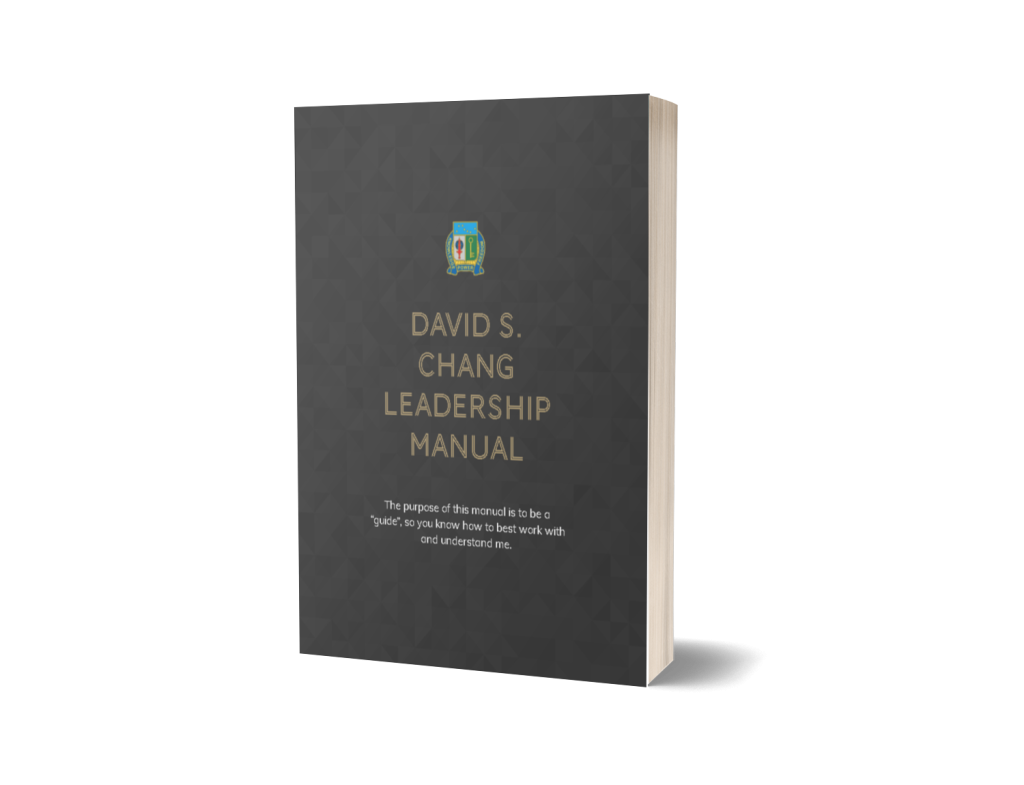
One of the first things any leader should do when taking command or joining a unit is to understand the organization. He or she should understand the different duty positions, roles, and their responsibilities.
Not having clear job descriptions and expectations is one of the main reasons for poor team cohesion. You mustn’t assume that people can read your mind and that they know your work style and leadership philosophy.
As part of my on-boarding process of assuming Battalion Command, I created a “Leadership Manual” for my battalion. I sent it to them to read beforehand as well as give them a short list of items I wanted from them. Whether it is in the military or a civilian job, a Leadership Manual can set a very powerful tone for the organization.
My Leadership Manual
The primary goal was to be very clear on my expectations, how I will evaluate their performance, help them understand who is responsible for what, and how they fit into the big picture. My “Leadership Manual” would help my team be on the same page as me and how to best work with me.
These documents were also the basis of my initial counseling for my Soldiers. It helped give them insight to my personality, work-style (including quirks!), and a clear road-map that I expected from them. I learned that without being as clear and simple as possible, I couldn’t expect others to do their job properly.
Here is what my Leadership Manual consists of.
- Understanding Me – This document explains my personality traits, my work style, explain my why in life, and what drives me. The goal is to explicitly help them become better aware of who I am so it would shorten the learning curve that might otherwise take months, or even years, to uncover. I put the results of the most common personality tests such as Myers-Briggs and the DISC Assessment.
- My Leadership Philosophy – This document defines how I view leadership, my mindset and attitude as a leader, as well as the principles and values that are important to me. It explains the behaviors and actions I will take to reach our mission and desired outcomes. It essentially is my compass, providing the road-map for my actions and let others know what to expect from my leadership.
- My Expectations – Leaders set the pace through their expectations. This document clearly shows what I expect from every Soldier and the standards I expect them to maintain. Clarity of goals and objectives is essential for success. It allows your team to focus on what’s important and “doing the right things right.” There are two types of expectations: performance expectations (results and outcomes that need to be achieved) and behavioral expectations (expected values, behaviors and attitudes required in the role).
- My Initial Counseling – Counseling is one of the most important leadership development responsibilities for leaders. It is important to take time to prepare for your initial counseling with each Soldier/Employee that you rate and senior rate. My main goal was to explain what I wanted the Soldier to accomplish within 30, 60, 90 days from the initial counseling, the rating scheme, and also the duties and responsibilities associated with the duty title.
- My Evaluation Report Philosophy – For jobs that require performance evaluations, you want to be very clear on your criteria for evaluations. I created a rubric so those I rated knew objectively how they would be rated. I wanted to ensure there was no subjectivity and I could not be accused of playing favorites.
- Roles and Responsibilities of the Battalion Command Team and Battalion Staff – I clearly outlined the job responsibilities of the senior positions in the BN. This would help delineate who I held responsible for the different tasks and how they each fit into the big picture.
Information I Requested
To be an effective leader I needed to get to know those in my unit. With several hundred Soldiers, it will be difficult to get to know everyone on an intimate level. These documents helped me get to know them better. Especially for my senior leaders, I wanted to know their personality type, their strengths, and how they view the world. It helped me discern the strengths of the unit’s soldiers and leaders, helping me maximize them.
- Leader Personality Resource – For my senior leaders and staff, I put together a resource page where they can take three personality tests: Myers-Briggs, the DISC Assessment, and the How the World Sees You HowtoFascinate test. Although the personality tests are not fool-proof, it can give great insight on their behaviors and actions.
- Soldier Questionnaire – A short questionnaire for every Soldier in my unit to take. My goal was to meet every Soldier in my unit within 6 months of taking command. I would create a “baseball card” for each Soldier based on this questionnaire. When meeting with them I could refer to it. In addition, you would be surprised on what you can learn. There are many that have unique skills that would not otherwise be known.
